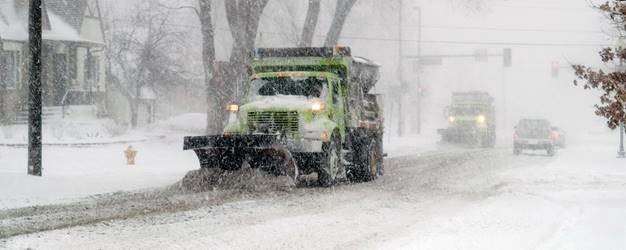 (Ready Campaign, Department of Homeland Security)
(Ready Campaign, Department of Homeland Security)
While we often associate melting ice caps and worsening and more frequent wildfires, hurricanes, and heat waves with climate change, there is growing evidence to suggest that the recent cold snap seen across much of the United States is also partially fueled by climate change.
From November 11 through 14th, 2019, an extreme dip in temperatures covering the Plains to the East Coast of the U.S. broke more than 400 records. Called “the most severe early November cold snap in more than a century,” the arctic blast led the “feels like” temperature in parts of Texas to drop a full 61 degrees overnight — from 92 degrees Farenheit all the way down to 31, below freezing. Meanwhile, in Indianapolis, temperatures dropped to 8 degrees Fahrenheit — the coldest ever seen for that date in November, stretching across records dating back to 1871.
The sudden dip in temperatures led to a number of school closures and the cancellation of over 1000 flights at Chicago’s O’hare airport. The arctic front also led to icy conditions that caused severe traffic accidents in Kansas and Michigan.
Frequently, climate deniers point to these unseasonably cold temperatures as a reason that climate change isn’t happening. But scientists disagree. So what’s the connection to climate change?
As we head toward winter, frigid temperatures are of course not uncommon; however, some scientists think that these kinds of more extreme temperature drops are exacerbated by a changing climate.
Here are 3 ways how a changing climate can contribute to cold snaps:
- Thanks to climate change, the Arctic is warming 2–3 times faster than the rest of the planet. This phenomenon of rapid Arctic warming, which is known as Arctic amplification, is clearly being felt in the Arctic — through melting permafrost and ice sheets, earlier winter ice breakup, and warmer temperatures in general. Atmospheric scientists are still studying how that will impact temperatures in the continental U.S., but one way it does impact the Lower 48 states’ weather is through the jet stream — explained in more depth below.
- This arctic warming can disrupt the polar vortex — essentially pushing arctic air down through the continental U.S.
- A polar vortex is a large pocket of extremely cold, low pressure air. There are two vortexes — one above each polar region of the globe (north and south). However, as Arctic (northern) ice melts, summertime heat is absorbed by the ocean below. That heat is then released into the atmosphere, producing disturbances that, along with changes in the jet stream (see number 3 below), can destabilize the vortex — a band of strong winds that usually keeps the cold up by the Arctic regions.
- When the polar vortex is unstable, it can break up and send pockets of cold Arctic air south — and record cold temperatures to the continental U.S. (This theory is still being explored and further evinces how we are still discovering the myriad ways climate change can impact our weather and Earth’s systems.)
3. The jet stream is also slower and weaker due to Arctic amplification.
- The jet stream is a current of strong wind above Earth’s atmosphere that drives the weather we experience. Arctic amplification — a warming Arctic — makes the air temperature and density gradient between the latitudes running across the U.S. northern border states and the mid-latitudes (covering Oregon and northern California to Virginia and North Carolina) smaller, weakening the jet stream.
- A weakened jet stream tends to meander much more in its waviness from North to South, and vice versa. That means that cold air that usually sticks around up north can instead be pushed south to mid-latitudes — as we saw in November 2019. Additionally, a weaker jet stream moves more slowly, so it can make the cold snaps we’ve been seeing more persistent.
As the planet gets hotter, more of the weather patterns and systems we understand are uprooted. Despite the potential observed correlation between climate change and cold snaps in the shorter term, it’s also important to recognize that weather is not climate and regardless of weather events in a region or country, the globe and its winters are generally expected to continue warming.